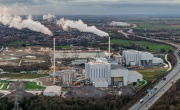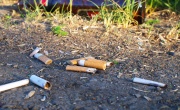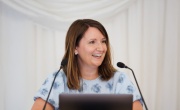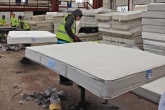Number of mattresses recycled up 55 per cent
New figures from trade association the National Bed Federation (NBF) have revealed a 55 per cent rise in the amount of mattresses being recycled between 2015 and 2017, after an initial drop in recycling between 2014 and 2015.
The NBF’s ‘2019 End of Life (EoL) Mattress Report’ surveyed local authorities, manufacturers, retailers and recyclers, as well as using detailed analysis from published data, to analyse the different types of mattresses used around the UK and how they are disposed of.

Of the mattresses that weren’t recycled, 40 per cent went into landfill and 41 per cent to energy-from-waste. It is predicted that the recycling rate for 2018 will have increased to 20-22 per cent, with mattress recyclers reporting that their throughput in 2018 was 29 per cent higher than in 2017.
The problem with mattresses
As many of us may have experienced from moving house or just having a clearout, it can be difficult to know how to dispose of a mattress and keep it out of landfill. Many local authorities offer bulky waste collection services, but the weight of mattresses makes them complex and costly for councils to transport, while the value of the materials that can be recovered is low.
While most of the materials that make up a mattress are technically recyclable, the way they are manufactured means the materials are difficult to separate, with soft materials such as cotton and foam often attached to metal inner springs. As such, the process of disassembly usually involves manual labour, which is time-consuming and expensive.
Nevertheless, with recycling rates up, it seems that manufacturers, retailers and other businesses are making a concerted effort to improve the way they recycle mattresses.
The Welsh Government, for example, launched a competition in 2016, in conjunction with Rhondda Cynon Taf County Borough Council, to invite local businesses to come up with innovative new solutions to ensure all components of a mattress can be recycled. The competition was won by three different organisations: the University of South Wales; Commons Vision, an environmental consultancy; and the Furniture Recycling Group/Resource Futures.
The following year, retailer John Lewis teamed up with the Furniture Recycling Group to offer a recycling service for mattresses, whereby customers who order a new mattress from John Lewis can have their old mattress collected for recycling and refurbishment into new mattresses.
However, while the recent increase in mattress recycling is positive news, the NBF’s 2019 report concluded that, at the current rate of progression, it would take another 50 years to reach a 100 per cent mattress recycling rate.
Tony Lisanti, president of the NBF, commented: “It is gratifying to see this organic increase in the rate of mattresses being diverted from landfill but we still have a lot to do if we are going to meet the NBF's ambitious target of 75 per cent diversion from landfill by 2028 through a combination of mattress recycling with energy-from-waste."
He added: "The NBF is already working on many of the report's recommendations for improving the rate and fate of mattresses at the end of their useful life as well as reducing the impact of our production on the resources of our planet. We must all accept shared responsibility, build mutual trust and work together proactively to achieve these goals."
Perhaps the imminent launch of the Register of Approved Mattress Recyclers (RAMR) scheme will go some way towards improving the ease of waste-free mattress disposal. The scheme, which is being developed by a stakeholder panel including the NBF and the Textile Recycling Association, will ‘establish a UK-wide register of approved mattress recyclers, which meet or exceed expected, desirable standards of operation.’
This register is intended to provide accurate information about trusted mattress recyclers across the UK, so that local authorities, businesses and individuals looking to recycle their used mattresses can ensure they are using a legitimate, reputable operator. The first recycling companies to sign up the RAMR are currently being assessed.
The NBF’s full ‘2019 End of Life (EoL) Mattress Report’ can be accessed online at the National Bed Federation website.






